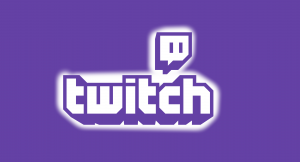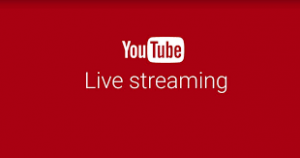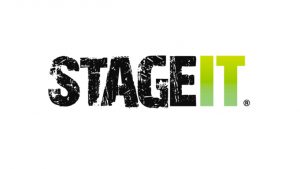The Guide to Concert Live Streaming for Artists and DJ’s
COVID-19 has restructured our world in ways that are tough to even comprehend in the present moment. Artists and DJs are especially impacted because for most performers, live shows have become a vital source of cash flow in the streaming era.
The upside is that music is a business that can be conducted virtually as well. It’s not like the hospitality industry where everything relies entirely on an in-person experience. Music is a content creation business and there are always new opportunities to repurpose your content on the internet. Now is a perfect time to connect with your fans through different virtual mediums and build a stronger base for when things begin to normalize.
Livestreaming is a great way to give fans something comforting in this uncertain time. It’s not a substitute for the real thing, but it’s a good way to bridge the gap until the situation changes. Here is a brief overview of how you can live stream a concert for your fans.
What is live streaming?
Livestreaming is a video or audio broadcast that is recorded and streamed live to consumers simultaneously. There are several viable live streaming platforms available – each has its own unique features and payment structure.
All you need for a live stream concert is a computer and a well-lit area to perform. You can choose to record with a high-quality webcam or camcorder if you want high resolution, but that’s totally up to you.
There are dozens of sites that allow live streaming in various capacities but for this article, I’m going to focus on the ones that are best suited for putting on concerts.
Free Platforms
Zoom

Zoom has become a popular online tool in the weeks since the quarantine was first enacted. It’s an all-purpose streaming app that can be used for anything from business conferences to one on one meetings. It’s a great app for independent artists who are looking to do an intimate show for a small audience.
Zoom is a great tool for live streaming concerts because of its simplicity. It’s free to use for both parties and fans can easily be added to the stream through email invitations. It’s perfect if you’re a smaller artist and want a low-risk way to experiment.
The downfall of Zoom is that there is a limit to the amount of people that can enter a session at one time. So, depending on the size of your fanbase, this may not be a viable option. Also, it was not designed for concert streaming so there is no way to monetize your show other than promoting your website or products during the stream. Plus, Zoom is being used by half the world right now so you may experience some complications if you’re using too much bandwidth.
IG / Facebook Live

Another great streaming option is using the native streaming features on your social media accounts. Instagram and Facebook both offer live streaming options that many artists are already using to connect with fans. Twitter also offers a live streaming option, however, this is not as widely used.
The benefit of live streaming on social media is that you have a built-in audience. There is a lower barrier to entry for people who already follow you and it’s a great way to attract new followers if you can get the word out.
The drawback of doing a full concert on IG or Facebook Live is that viewers are less likely to be as immersed in the experience. These platforms are better for bite-sized, easy to consume content. Unless you already have a hardcore cult following who is hungry for long-form content it will be tough to keep a captive audience for a performance longer than 15 minutes.
But it’s free and easy to orchestrate. If you don’t mind viewers popping in and out then live streaming directly through social media is not a bad option.
Platforms with Monetization Features
Twitch

Twitch is a platform that is often associated with the gaming community; however, it can be a great tool for artists as well. It’s a subscription-based streaming service that allows audience members to stream content and donate to their favorite creators if they so choose. You can follow creators for free or subscribe for a monthly fee and receive additional benefits.
Through Twitch, gamers have uncovered an innovative way of interacting with fans that artists can learn from. Gamers practice their craft and earn additional revenue by streaming on Twitch for those interested in learning new techniques or just observing the action.
Despite its popularity e-sports was a difficult activity to monetize for independent gamers until live streaming cam along. It didn’t have the same ability to earn money off spectators as live sporting events and streaming opened that door. Twitch has allowed gamers to cultivate an audience and monetize their skills and personalities, opening up new avenues for video game enthusiasts to build sustainable careers.
Musicians and performers should learn from this model. Twitch is a great platform for live streaming concerts because it’s free to stream and there is a possibility of earning donations.
The audience on Twitch tends to be more engaged because unlike IG or Facebook, many have paid money for this service and are psychologically more invested in the content being broadcast. Also, Twitch is a site that is solely dedicated to live streaming so there are more advanced features and creator support than any other platform.
Twitch opens the doors for all kinds of creative possibilities. When you’re not putting on concerts you may want to start a weekly live stream. You could answer fan questions in exchange for donations or give an inside look at the studio process. You’ll have to get creative if you want to make money. But, Twitch is an innovative platform that could be used more effectively by the artistic community.
YouTube Live

YouTube Live in another viable option for streaming concerts. It’s a competitor to Twitch and has a similar business model.
YouTube provides the convenience of social media with the in-depth features of a site like Twitch. Users can donate during a live stream, send chats to interact with the content being created and enjoy many features that are comparable to those found on Twitch.
The biggest difference between the two platforms is that Twitch tends to be more creator-friendly, while YouTube is a larger, more general brand. The Twitch community is one that is accustomed to paying for their content and are more likely to donate because they are accustomed to the system. For that reason, streams on YouTube Live tend to generate less profit for the creators.
However, YouTube is also the 2nd biggest search engine in the world and there are benefits from hosting your content on such a massive platform.
Although it’s beginning to diversify, Twitch is still mostly known for video game streams and e-sport’s related media. So, if you stream a concert on the platform, it’s less likely that new fans will stumble across your content than on YouTube.
Twitch and YouTube Live are probably the best bet for live streaming a concert for the majority of performers because they are the most adept at handling long-form live-streamed content. Which you chose will depend on your audience and your level of comfort with using the software.
StageIt

Stage It is a website specifically designed for hosting virtual concerts. To view a performance on Stage It, fans must purchase a virtual ticket beforehand that is sent to their email. It’s a site created specifically with live music in mind and is one of the oldest operating virtual concert vendors.
Stage It is a great resource if you already have a dedicated following. It may be tough to convince casual listeners to pay for a virtual show (unlike Twitch or YouTube Live there is no option for free viewing). You may have to adjust your show prices or offer some other incentive – like free merch or additional exclusive content – to attract buyers. Or at least put more effort into props and staging for the performance
But if you have a cult following who is dying to see you perform, It provides a great way to monetize virtual concerts.
Livestreaming vs. Real Concerts

Ultimately, there is no substitute for a live show. You can’t replicate the energy and passion of seeing a beloved artist perform before hundreds or thousands of adoring fans.
But not all hope is lost. Livestreaming is an emerging medium that allows for fans and artists to interact in real-time. It’s more cost-effective than hosting a live show and doesn’t require all the additional overhead (travel, hotel rooms, stage props, etc). It also doesn’t yield the same amount of revenue, but for the time being it’s a decent placeholder and there is money to be made if you market yourself creatively.
Eventually, the virus will be subdued, and live shows will return. Savvy creative entrepreneurs should use this time to learn the potential of live streaming and continue to utilize those skills to create additional revenue streams once the threat has passed.











